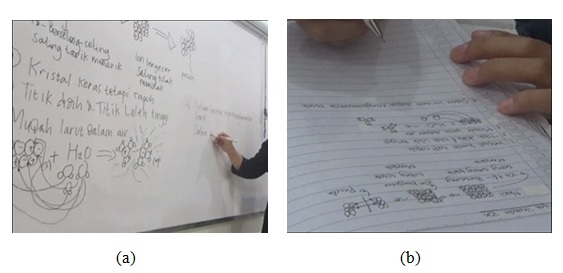
The Students’ Critical Thinking Skill in Exploiting Covalent Bond Material
Abstract
Keywords
Full Text:
PDFReferences
Arani, M. R. S. (2017). Raising the quality of teaching through kyouzai kenkyuu-the study of teaching materials. International Journal for Lesson and Learning Studies, 6(1), 10–26.
Burrowes, P. A. (2003). A Student-Centered Approach to Teaching General Biology That Really Works: Lord’s Constructivist Model Put to a Test. The American Biology Teacher, 65(7), 491–502.
Dwyer, C. P., Hogan, M. J., Harney, O. M., & O’Reilly, J. (2014). Using Interactive Management to Facilitate a Student-centred Conceptualisation of Critical Thinking:a Case Study. Education Technology Research Development, 62(6), 687–709.
Ennis, R. H. (2001). Goals for a Critical Thinking Curriculum and Its Assessment (3rd ed.; A. L. Costa, Ed.). Alexandria: ASCD Express.
Erna, M., Rery, R., Astuti, W., & Sulismayati. (2018). Peningkatan Kemampuan Berpikir Kritis Peserta Didik pada Materi Termokimia di SMA Pekanbaru melalui Penerapan Strategi Pembelajaran Proces Oriented Guided Inquiry Learning (POGIL). Jurnal Riset Pendidikan Kimia, 8(1), 17–27.
Fisher, A. (2009). Berpikir Kritis sebuah pengantar. Jakarta: Erlanggga.
Fuad, N. M., Zubaidah, S., Mahanal, S., & Suarsini, E. (2017). Improving Junior High Schools’ Critical Thinking Skills Based on Test Three Different Models of Learning. International Journal of Instruction, 10(1), 101–116.
Kemendikbud. (2011). Survey International TIMSS. Retrieved from http://litbang.kemdikbud.go.id/ index. php/Survey Intenational TIMSS&searchphrase.
Lai, E. R. (2011). Critical Thinking: A Literature Review. In Research Report: Pearson.
Liliasari. (2002). Pengembangan Model Pembelajaran Kimia untuk Meningkatkan Strategi Kognitif Mahasiswa Calon Guru dalam Menerapkan Berpikir Konseptual Tingkat Tinggi. Bandung.
Liu, O. L., Frankle, L., & Roohr, K. C. (2014). Assessing Critical Thinking in Higher Education : Current State and Directions for Next-Generation Assessment. In ETS Research Report Series.
Magno, C. (2010). The role of metacognitive skills in developing critical thinking. Metacognition and Learning, 5(2), 137–156.
Martincova, J., & Lukesova, M. (2015). Critical Thinking as a Tool for Managing Intercultural Conflicts. Procedia - Social and Behavioral Sciences, 171, 1255–1264.
OECD. (2009). A Framework for PISA: Assessing Scientific, Reading, and Mathematical Literacy. OECD Publishing.
OECD. (2019). PISA 2018: Insights and Interpretations. Retrieved from OECD .org website: https://www.oecd.org/pisa/PISA 2018 Insights and Interpretations FINAL PDF.pdf
Permendikbud. (2018). Salinan Permendikbud No. 34 Tahun 2018 Lampiran III tentang Standar Proses Pembelajaran SMK/MAK. Retrieved from https://ainamulyana.blogspot.com/2019/01/permendikbud-nomor-34-tahun-2018.html
Yu, K.C., Lin, K.Y., & Fan, S.C. (2015). An Exploratory Study on The Application Of Conceptual Knowledge and Critical Thinking to Technological Issues. International Journal Technology Design Education, 25(3), 339–361.
Zohar, A., Weinberger, Y., & Tamir, P. (1994). The Effect of Biology Critical Thinking Project in The Development of Critical thinking. Journal of Research in Science Teaching, 31(2), 183–196.
DOI: http://dx.doi.org/10.31258/jes.4.3.p.478-486
Refbacks
- There are currently no refbacks.
Copyright (c) 2020 Yunita Danora, Sumar Hendayana, Asep Supriatna

This work is licensed under a Creative Commons Attribution 4.0 International License.
Publisher: FKIP Universitas Riau












